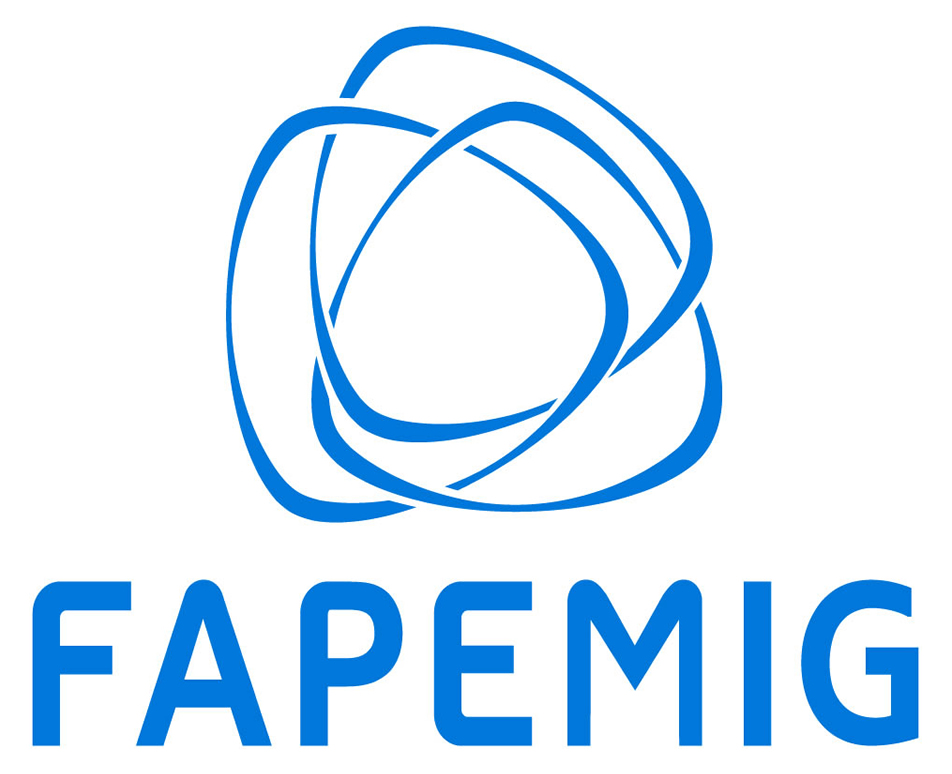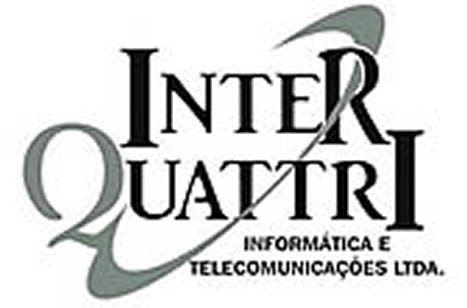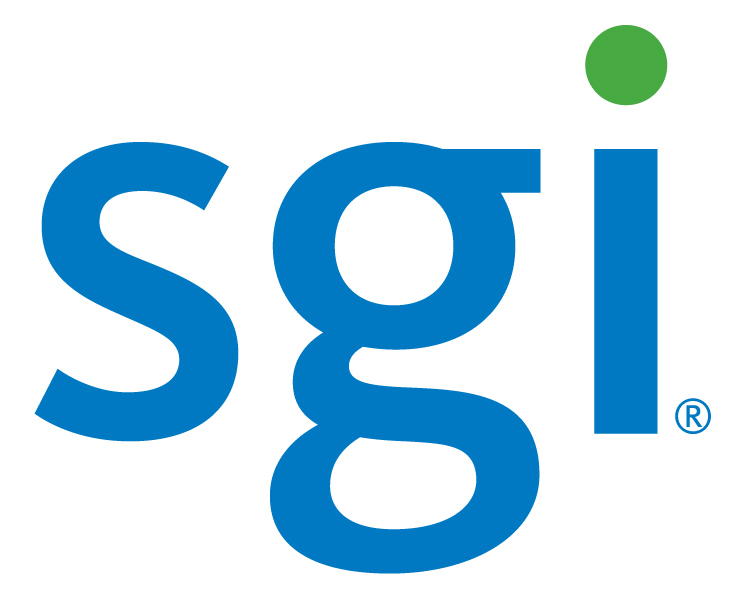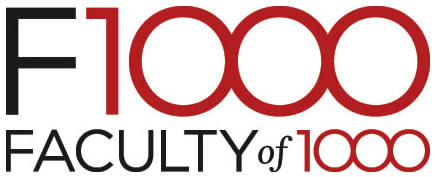Flash Talk Presentations
Presenters: 10 min + 5 for questions. Authors must bring the presentation on a flash drive in PPT and/or PDF. If you prefer to present on your own computer make sure you have the necessary adaptors, specially for Apple's users.
For the schedule please see here
- Session A: Functional Genomics + Systems Biology and Networks + Protein Structure and function Prediction and Analysis
- Session B: Population Genetics, Variation and Evolution + Sequence Analysis
- Session C: Bioinformatics of Disease and Treatment + Pathogen informatics
Session A: Functional Genomics + Systems Biology and Networks + Protein Structure and function Prediction and Analysis
Presenting Author: José Carlos Mombach, UFSM, Brazil
Additional Authors
Bruno Vendrusculo UFSM, Brazil
Cristhian Bugs UFPampa, Brazil
Claudine Chaouiya Instituto Gulbenkian, Brazil
Éder Simão UNIFRA, Brazil
Abstract:
Cell cycle checkpoints lead to diverse cellular fates including senescence. Cellular senescence is known for having a tumour-suppressive function and its regulation arouses a growing scientific interest. We propose a logical model for DNA-damage induced cell cycle arrest, this model qualitatively agrees with most experimental observations, especially with astrocyte senescence associated with Alzheimer´s
TOP
DIFFERENTIAL EXPRESSION AND ASSOCIATION MAPPING ANALYSIS OF DEFENSE RESPONSE TO A FUNGAL PATHOGEN IN SUNFLOWER (Helianthus annuus L.)
Presenting Author: Maximo Rivarola, INSTITUTO DE BIOTECNOLOGIA, INTA CASTELAR, Argentina
Additional Authors
Federico Ehrenbolger INTA, Argentina
Carla Filippi INTA, Argentina
Jeremias Zubrzycki INTA, Argentina
Julio Di Rienzo Universidad Nacional de Cordoba, Argentina
Paula Fernandez INTA, Argentina
Sergio Gonzalez INTA, Argentina
Carla Maringolo INTA, Argentina
Facundo Quiroz INTA, Argentina
Diego Cordes INTA, Argentina
Alberto Escande INTA, Argentina
Esteban Hopp INTA, Argentina
Ruth Heinz INTA, Argentina
Veronica Lia INTA, Argentina
Norma Paniego INTA, Argentina
Abstract:
Leaf senescence is the last stage of plant development. It is a complex mechanism controlled by multiple variables, either from genetic and environmental origin that strongly impacts on crop yield. NAC transcription factors have been described as relevant players in the regulation and progress of not only leaf senescence in model plants but also in plant development, biotic and abiotic stress regulation. Transcriptional profiles of candidate senescence associated genes (SAGs) genes were evaluated in two sunflower leaves undergoing natural senescence, in association with physiological parameters such as chlorophyll, total soluble sugars and nitrogen content, in order to assess the triggering time of different mechanisms along the onset and evolution of the senescence process in sunflower.
Field experiments were conducted with plants growing under water stress and control conditions. Microarray, qPCR and GC-MS analysis were performed with leaf samples collected at different time points through plant development.
Up regulation of senescence associated genes (SAGs) was detected at early stages, prior to anthesis and before the appearance of the first physiological symptoms. These transcriptional changes were correlated with metabolic profiles evaluated in the same samples, showing a complex mechanism involved in the progression of senescence. In addition, transcription factors potentially involved in the process, which might play a key role in leaf senescence and program cell death (known as “hub-genes”), were evaluated. Robust software for data integration for transcripts and metabolites was achieved in order to detect new potential biomarkers associated to early leaf senescence in sunflower.
Presentation PDF: Download Abstract
TOP
Exploring the membrane potential of a simple dual membrane system by using a constant electric field
Presenting Author: Yerko Escalona, Fundación Ciencia & Vida, Chile
Additional Authors
Jose Antonio Garate Fundación Ciencia & Vida, Chile
Tomas Perez-Acle Fundación Ciencia & Vida, Chile
Abstract:
Connexins (Cxs) constitute Gap Junction Channels (GJCs). GJCs connect the cytoplasm of adjacent cells providing a hydrophilic path between cells that allow the movement, by passive diffusion, of water, cations and small molecules. The opening or closing of GJCs is dependent on the voltage difference between the apposed cells and/or the membrane potential. An approach to understand the voltage gating mechanisms of GJCs is to study a simplified system that can account for the basic features of a GJC. In this work, we have devised a series of simple systems bearing in mind that idea. The systems here presented are: i) a dual membrane, ii) a dual membrane with a pore on each membrane, iii) a dual membrane with a channel connecting both membranes, and iv) a dual membrane with a channel having explicit charges inside. In all cases, membrane and pore were built solely with carbon atoms. Both equilibrium and non-equilibrium MD simulations were performed in all systems. Non-equilibrium simulations were produced by applying a uniform external electric field in order to produce a potential difference across the membranes. We then performed detailed analyses of the electrostatic potential, ionic current and the potential of mean force of an ion through the system pores. This study provided important insights regarding the behavior of the electrostatic potential and ion currents inside simple dual membrane systems with or without a connecting channel, and will be useful in understanding of the voltage effects and ion transport mechanisms of GJCs.
TOP
Presenting Author: Lucas Bleicher, Universidade Federal de Minas Gerais, Brazil
Abstract:
Amino acid residue correlation in different columns of a multiple sequence alignment is a phenomenum observed for decades. The same can be said about the interpretation of "compensatory mutations", where a deleterious mutation can have its effect negated upon another mutation. The quantification of such correlated mutations was made possible by the availability of large sequence databases, and with it its first immediate application - the detection of "contact pairs" in three-dimensional structures. However, a limitation was immediately found: the algorithms used led to many false positives - i.e., residues which were correlated, but not in direct contact. This is caused by the fact that there are at least two other sources of residue correlation: the phylogenetic effect and the existence of sub-classes in a protein family. Recently, significant progress has been made in obtaining high quality sets of contact pairs, to the point of enabling specialized correlation metrics to be used for structure prediction and folding simulations. I briefly discuss the achievements of such methods and present a methodology we have been developing in recent years which aims to identify sub-class determinants in protein families. This method, called Decomposition of Residue Correlation Networks, has been successfully used to identify metal binding and oligomeric state determinants in Fe/Mn-Superoxide Dismutases, to characterize a divergent group of nuclear receptors in C. elegans, and to confirm the role of yeast Her2p as a sub-unit of the GatFAB complex. We review such successful cases and discuss its current applications to projects in our lab.
TOP
Session B: Population Genetics, Variation and Evolution + Sequence Analysis
Presenting Author: Dominique LAVENIER, French National Center for Scientific Research, France
Additional Authors
Erwan Drezen INRIA, France
Rayan Chikhi Penn State University, United States
Claire Lemaitre INRIA, France
Pierre Peterlongo INRIA, France
Guillaume Rizk INRIA, France
Abstract:
The analysis of NGS data remains a time and space-consuming task. Many efforts have been made to provide efficient data structures for indexing the terabytes of data generated by the fast sequencing machines (Suffix Array, Burrows-Wheeler transform, Bloom Filter, etc.). Mapper tools, genome assemblers, SNP callers, etc., make an intensive use of these data structures to keep their memory footprint as lower as possible.The overall efficiency of NGS software is brought by a smart combination of how data are represented inside the computer memory and how they are processed through the available processing units inside a processor. Developing such software is thus a real challenge, as it requires a large spectrum of competences from high-level data structure and algorithm concepts to tiny details of implementation.The GATB software toolbox aims to lighten the design of NGS algorithms. It offers a panel of high-level optimized building blocks to speed-up the development of NGS tools related to genome assembly and/or genome analysis. The underlying data structure is the de Bruijn graph, and the general parallelism model is multithreading. The GATB library targets standard computing resources such as current multicore processor (laptop computer, small server) with a few GB of memory. From high-level C API, NGS programing designers can rapidly elaborate their own software based on state-of-the-art algorithms and data structures of the domain
TOP
DNA sequences do have a mathematical structure, and ancient DNA sequence can be revealed by error-correcting codes
Presenting Author: Marcelo Brandão, University of Campinas, Brazil
Additional Authors
Larissa Spoladore ESALQ / USP, Brazil
Luzinete Faria University of Campinas, Brazil
Andréa Rocha University of Campinas, Brazil
Marcio Silva-Filho ESALQ / USP, Brazil
Reginaldo Palazzo University of Campinas, Brazil
Abstract:
A previously described DNA sequence generator algorithm (DNA-SGA) using error-correcting codes has been employed as a computational tool to address the evolutionary pathway of the genetic code. The code-generated sequence alignment demonstrated that a residue mutation revealed by the code can be found in the same position in sequences of distantly related taxa. Furthermore, the code-generated sequences do not promote amino acid changes in the deviant genomes through codon reassignment. A Bayesian evolutionary analysis of both code-generated and homologous sequences of the Arabidopsis thaliana malate dehydrogenase gene indicates an approximately 1 MYA divergence time from the MDH code-generated sequence node to its paralogous sequences. The DNA-SGA helps to determine the plesiomorphic state of DNA sequences because a single nucleotide alteration often occurs in distantly related taxa and can be found in the alternative codon patterns of nonstandard genetic codes. As a consequence, the algorithm may reveal an earlier stage of the evolution of the standard code.
TOP
Presenting Author: Giordano Soares-Souza, Universidade Federal de Minas Gerais, Brazil
Abstract:
Genetic diversity is associated with the phenotypic differentiation found among human populations. While most part of this diversity occurs among individuals of the same population and the interaction with the environment is crucial to determine the phenotype, the study of variants that are genetically structured in the human population is essential in two important fields of biology: evolution and medicine. In the present work, we describe the database integration tool MASSA (Multi-Agent System for SNP Annotation) and in the genomic scope, the identification of 69891 polymorphisms (SNPs) highly differentiated in Native American populations in respect to the West Africa, Europe and East Asia populations. These genetic variants were annotated using MASSA. Through the enrichment analysis performed by MASSA on database attributes of GO, HGNC, OMIM, PGKB and Reactome, we identified enriched terms of these databases in the annotation of differentiated genes in Native American. These analyzes confirmed previous knowledge on the genetic structure of natives, such as: high diversity in polymorphisms associated with type 2 diabetes and evidence of positive selection in genes involved in immune response and nervous system activity. And also was possible to identify new insights at Natives as groups of differentiated genes involved in the production of ionotropic membrane receptors related to the efficacy of treatment and severity of cognitive phenotypes; and nucleoporines associated with viral infection and carbohydrate transport.
TOP
Geneplast: an R package for evolutionary rooting and plasticity inference based on orthologous groups distribution.
Presenting Author: Rodrigo Dalmolin, UFRN, Brazil
Abstract:
A remarkable characteristic of post genomic era is the increasing number of complete genome sequences available. However, there is paucity of computational tools able to readily evaluate the evolutionary history of entire biochemical systems. Geneplast is an R package designed to evolutionary rooting and evolutionary plasticity analysis based on orthologous groups distribution. The two main functions on the package are gplast, which computes the evolutionary plasticity as described by Dalmolin (doi: 10.1186/1745-6150-6-22), and groot, which computes the evolutionary root of given gene. Evolutionary root is obtained by computing the presence and absence of orthologs in every species composing an evolutionary tree branch and condensing that information in a numeric vector where each value represents the probability of an ortholog ancestor gene had been present at that LCA. After computing the probability vector, groot function uses Bridge algorithm to search for the most reliable evolutionary root of the analyzed gene. Briefly, Bridge algorithm looks for the point that best discriminate the distribution of presence and absence in the probability vector. After find the most reliable evolutionary root, groot function computes an inconsistence score S regarding the average probability before the rooting point, including this, and after the root. The algorithm then computes a p-value obtained by a null curve construction. Geneplast package adds on the current methods by allowing analyzing thousands of genes in hundreds of species in a feasible time using a personal computer.
TOP
Session C: Bioinformatics of Disease and Treatment + Pathogen informatics
Presenting Author: Ross Fitzgerald, University of Edinburgh,
Abstract:
Staphylococcus aureus is a major global pathogen. In addition to a wide spectrum of human diseases, S. aureus causes economically important infections of cows, sheep, poultry, and rabbits. We have been investigating the evolutionary history of S. aureus clones associated with different host species and the molecular basis for host-adaptation, and have determined the whole genome sequence of several hundred strains of S. aureus from human and animal hosts. Using several phylogenetic approaches including Bayesian Evolutionary Analysis Sampling Trees (BEAST) to facilitate time-scales phylogenies, we have identified ancient and recent host-switching events leading to the emergence of endemic clones in both humans and livestock. Differences in the capacity to develop resistance to antibiotics were revealed in different host species which may in part reflect variation in agricultural practices. In addition, we have discovered emergent clones of methicillin-resistant S. aureus (MRSA) that evolved through host jumps from cows into humans followed by pandemic spread among human populations. In addition, comparative genomic analysis has resulted in the identification of specific mutations which have contributed to the capacity to infect different hosts. Taken together, these data have resulted in broad new insights into the capacity for bacteria to switch hosts and adapt to new ecological niches. Importantly bacterial determinants required for host-specificity could represent novel therapeutic targets for controlling human and animal infections.
TOP
Presenting Author: Parisa Razaz, Institute of Cancer Research,
Additional Authors
Paul Clarke Institute of Cancer Research,
Costas Mitsopoulos Institute of Cancer Research,
Paul Workman Institute of Cancer Research,
Bissan Al-Lazikani Institute of Cancer Research,
Abstract:
There are numerous druggable protein families exploitable for small molecule drug discovery, which play a key role in cancer and are either not explored or insufficiently explored by medicinal chemistry. Through a combined computational and experimental approach we can identify and begin validating these families.
To this end, we have carried out multi-parameter and objective computational druggability assessment of the entire human proteome (~20,270 UniProts) using ligand-, structure-, network- and precedence-based druggability analysis methods. By this means, we have prioritised 12 novel families that are likely to be druggable, and that are underexplored in medicinal chemistry, highlighting 4 in particular. We combined this with bioinformatics analysis of multi-omic clinical data from 16 different cancer types in order to rank the protein families based on potential evidence of deregulation in these cancers.
Here we present the findings of this analysis, along with results of initial experimental validation through RNAi silencing for the most highly prioritised family. Application of these objective methodologies allows identification of previously untapped druggable families for cancers, in addition to establishment and application of a computational pipeline for multi-parameter druggability assessment.
TOP
Mutational analysis of genes coding for cell surface proteins in colorectal cancer cell lines reveal novel altered pathways, druggable mutations and mutated epitopes for targeted therapy
Presenting Author: Elisa Donnard, Hospital Sirio Libanes, Brazil
Additional Authors
Paula Asprino Hospital Sirio Libanes, Brazil
Bruna Correa Hospital Sirio Libanes, Brazil
Fabiana Bettoni Hospital Sirio Libanes, Brazil
Fernanda Koyama Hospital Sirio Libanes, Brazil
Raphael Parmigiani Hospital Sirio Libanes, Brazil
Pedro Galante Hospital Sirio Libanes, Brazil
Anamaria Camargo Ludwig Institute for Cancer Research, Brazil
Abstract:
We carried out a mutational analysis of 3,594 genes coding for cell surface proteins (Surfaceome) in 23 colorectal cancer cell lines, searching for new altered pathways, druggable mutations and mutated epitopes for targeted therapy in colorectal cancer. A total of 3,944 somatic non-synonymous substitutions and 595 InDels, occurring in 2,061 (57%) Surfaceome genes were catalogued. We identified 48 genes not previously described as mutated in colorectal tumors in the TCGA database, including genes that are mutated and expressed in >10% of the cell lines (SEMA4C, FGFRL1, PKD1, FAM38A, WDR81, TMEM136, SLC36A1, SLC26A6, IGFLR1). Analysis of these genes uncovered important roles for FGF and SEMA4 signaling in colorectal cancer with possible therapeutic implications. We also found that cell lines express on average 11 druggable mutations, including frequent mutations (>20%) in the receptor tyrosine kinases AXL and EPHA2, which have not been previously considered as potential targets for colorectal cancer. Finally, we identified 82 cell surface mutated epitopes, however expression of only 30% of these epitopes was detected in our cell lines. Notwithstanding, 92% of these epitopes were expressed in cell lines with the mutator phenotype, opening new venues for the use of “general” immune checkpoint drugs in this subset of patients.
TOP
Presenting Author: Daniel Almonacid, Universidad Andres Bello, Chile
Additional Authors
Daniel Pizarro Universidad Andres Bello, Chile
Jose Soto Universidad Andres Bello, Chile
Juan Pablo Bascur Universidad Andres Bello, Chile
Ignacio Varas Universidad Andres Bello, Chile
Abstract:
Cancer is the second most frequent cause of death in the developing world. Pathophysiologically, cancer is defined as a deregulation of the pathways involved in cell growth and differentiation as a result of genetic alterations in microRNA genes, oncogenes, and tumor-suppressor genes. Our work aims at addressing two of the main issues facing cancer genomics. First, mutations identified in genome sequencing of tumors are normally interpreted at the gene level. Second, experimental functional assignments are only available for 5% of the proteins of the human proteome.
We are gaining a better insight into the molecular and biological consequences of cancer mutations in proteins through identification of the sequence-structure-function relationships of the superfamilies to which these proteins belong using protein similarity networks. In these networks, nodes represent protein sequences and/or structures, edges correspond to sequence/structure similarities among nodes. Whole-exome somatic mutations for 4327 patients affected by one of 19 different types of cancer were obtained from The Cancer Genome Atlas. We generated protein similarity networks for significantly mutated proteins in these data, and then studied the topologies of the resulting networks to identify clades of homologous proteins.
So far, we have computationally assessed the impact of mutations in metabolic enzymes (isocitrate dehydrogenase), DNA binding proteins, and proteins known to aggregate. Some of these testable hypothesis of the impact of cancer mutations in proteins are being investigated by ourselves. Our results have a direct impact in the definition of novel molecular markers for cancer and their use as potential targets for therapy.
TOP






